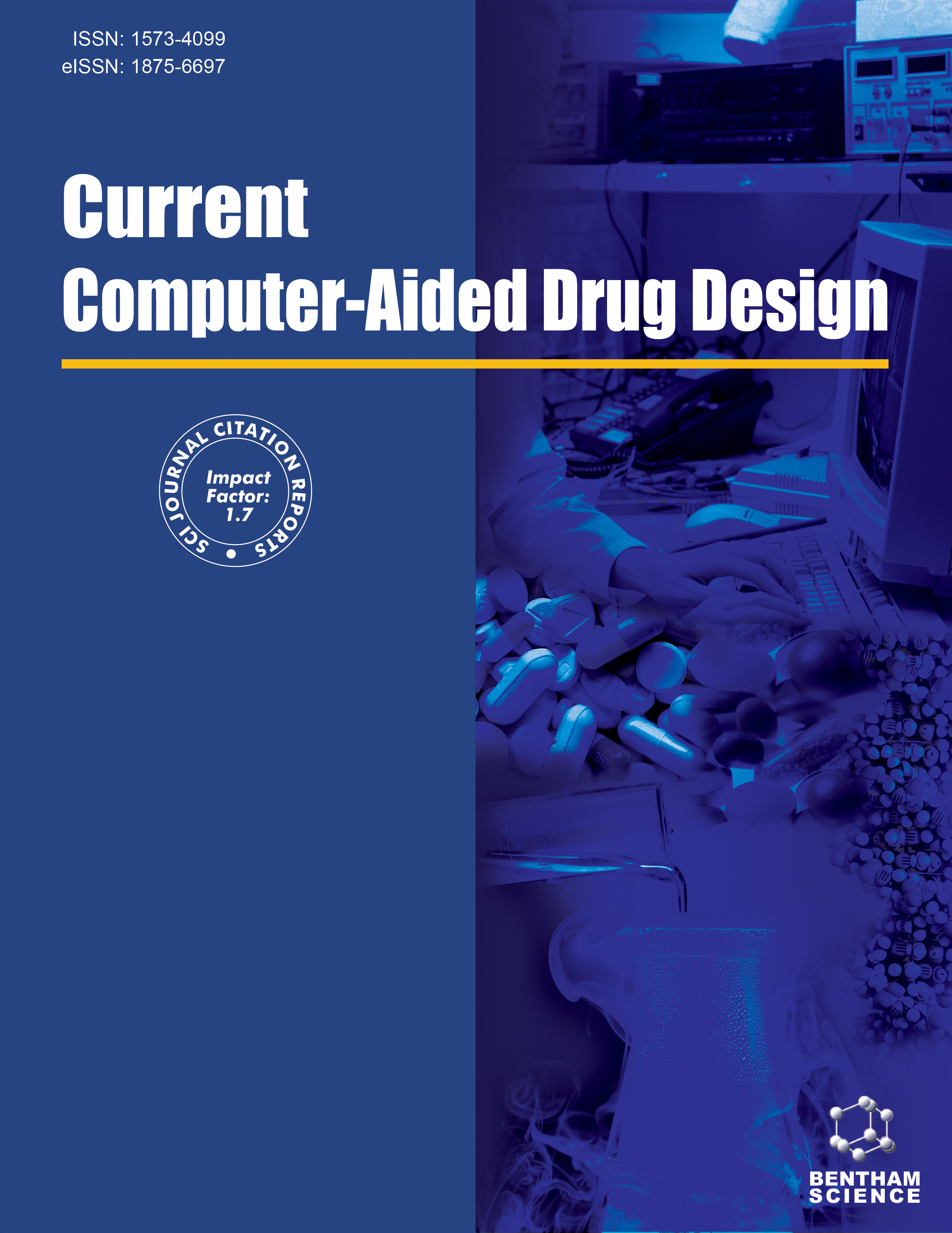- Home
- A-Z Publications
- Current Computer - Aided Drug Design
- Previous Issues
- Volume 14, Issue 1, 2018
Current Computer - Aided Drug Design - Volume 14, Issue 1, 2018
Volume 14, Issue 1, 2018
-
-
Quantitative Structure-Activity Relationships of Aquatic Narcosis: A Review
More LessAuthors: Chandana Adhikari and Bijay k. MishraBackground: Prior estimation of toxicity of each and every, existing and yet to be synthesized chemicals is a must to elude their adverse effect on the environment. Experimental determination of such parameters is time consuming, cost effective and above all, it demands the sacrifice of many vertebrates. At this end, the REACH regulations advocate for the use of non-testing predictive methods such as read-across, weight-of-e Read More
-
-
-
Binding Site and Potency Prediction of Teixobactin and other Lipid II Ligands by Statistical Base Scoring of Conformational Space Maps
More LessAuthors: Claudiu N. Lungu and Mircea V. DiudeaBackground: Lipid II, a peptidoglycan, is a precursor in bacterial cell synthesis. It has both hydrophilic and lipophilic properties. The molecule translocates a bacterial membrane to deliver and incorporate “building blocks” from disaccharide-pentapeptide into the peptidoglican wall. Lipid II is a valid antibiotic target. A receptor binding pocket may be occupied by a ligand in various plausible conformations, among which only Read More
-
-
-
Hybrid Docking-QSAR Studies of 1, 4-dihydropyridine-3, 5-Dicarboxamides as Potential Antitubercular Agents
More LessAuthors: Yasaman Rasouli and Asghar DavoodBackground: Tuberculosis is one of the main medical problems and some people are suffering still from this infectious disease. 1, 4-dihydropyridines are multi-target ligands that recently are recognized as anti-tubercular agents. Methods: In the current research, computational studies were conducted of some synthesized 1, 4- dihydropyridine-3, 5-dicarboxamides in non-hydrolyzed and hydrolyzed forms to find the drugrecep Read More
-
-
-
A Comparative Study on Selective PPAR Modulators through Quantitative Structure-activity Relationship, Pharmacophore and Docking Analyses
More LessAuthors: Ashis Nandy, Kunal Roy and Achintya SahaBackground: Metabolic syndrome is a matrix of different metabolic disorders which are the leading cause of death in human beings. Peroxysome proliferated activated receptor (PPAR) is a nuclear receptor involved in metabolism of fats and glucose. Objective: In order to explore structural requirements for selective PPAR modulators to control lipid and carbohydrate metabolism, the multi-cheminformatics studies have been Read More
-
-
-
Molecular Docking Studies Applied to a Dataset of Cruzain Inhibitors
More LessBackground: Chagas' disease is one of the main causes of heart failure in developing countries. The disadvantages of current therapy include the undesirable side-effects, resistance, and therapeutic adhesion. The development of new efficient and safe drugs is, therefore, an issue of extreme importance. Objectives: In order to gain a better understanding of how the compounds interact with the target, computational methods Read More
-
-
-
Pharmacophore Modelling and 4D-QSAR Study of Ruthenium(II) Arene Complexes as Anticancer Agents (Inhibitors) by Electron Conformational- Genetic Algorithm Method
More LessAuthors: Sevtap C. Yavuz, Nazmiye Sabanci and Emin SaripinarObjective: The EC-GA method was employed in this study as a 4D-QSAR method, for the identification of the pharmacophore (Pha) of ruthenium(II) arene complex derivatives and quantitative prediction of activity. Methods: The arrangement of the computed geometric and electronic parameters for atoms and bonds of each compound occurring in a matrix is known as the electron-conformational matrix of congruity ( Read More
-
-
-
Design, Synthesis, and Biological Evaluation of Vanillin Hydroxamic Acid Derivatives as Novel Peptide Deformylase Inhibitors
More LessAuthors: Jian Gao, Shengzhi Qiu, Li Liang, Zhixiang Hao, Qianqian Zhou, Fanfan Wang, Jie Mou and Qisi LinBackground: Infectious disease is increasingly hampering human health, which challenge the discovery of new antibacterial target. Peptide deformylase (PDF), a metalloenzyme responsible for catalyzing the removal of the N-formyl group from nascent proteins, was considered as an important target in antibacterial drug discovery. Objective: Reported here are the design, synthesis and biological evaluation of vanillin h Read More
-
Volumes & issues
-
Volume 21 (2025)
-
Volume 20 (2024)
-
Volume 19 (2023)
-
Volume 18 (2022)
-
Volume 17 (2021)
-
Volume 16 (2020)
-
Volume 15 (2019)
-
Volume 14 (2018)
-
Volume 13 (2017)
-
Volume 12 (2016)
-
Volume 11 (2015)
-
Volume 10 (2014)
-
Volume 9 (2013)
-
Volume 8 (2012)
-
Volume 7 (2011)
-
Volume 6 (2010)
-
Volume 5 (2009)
-
Volume 4 (2008)
-
Volume 3 (2007)
-
Volume 2 (2006)
-
Volume 1 (2005)
Most Read This Month
Article
content/journals/cad
Journal
10
5
false
en


